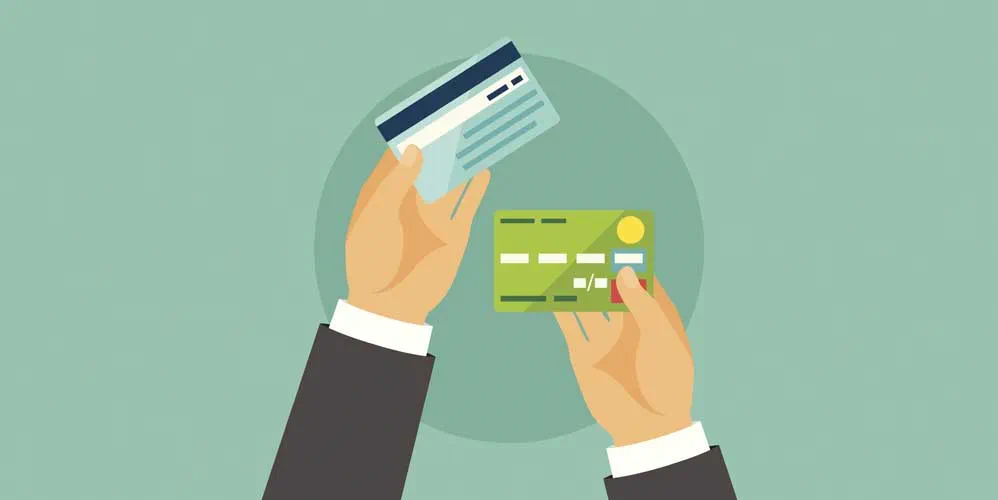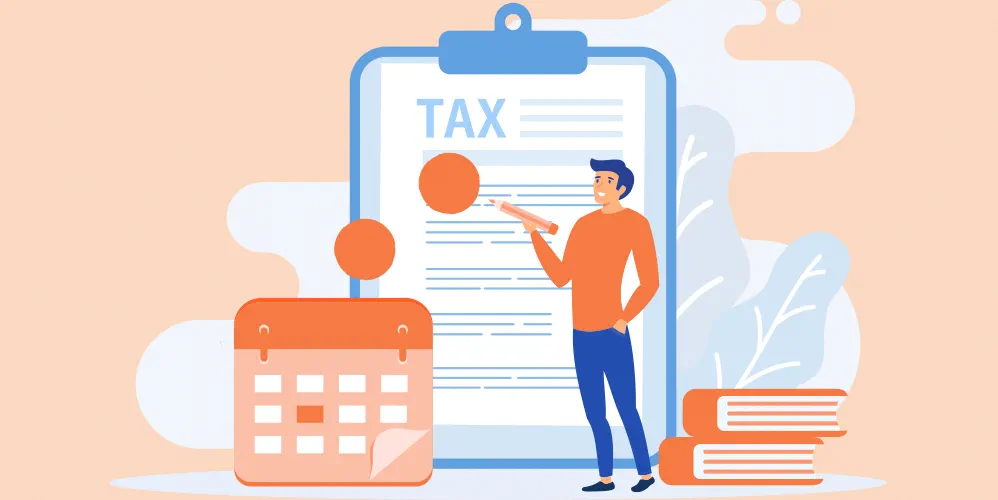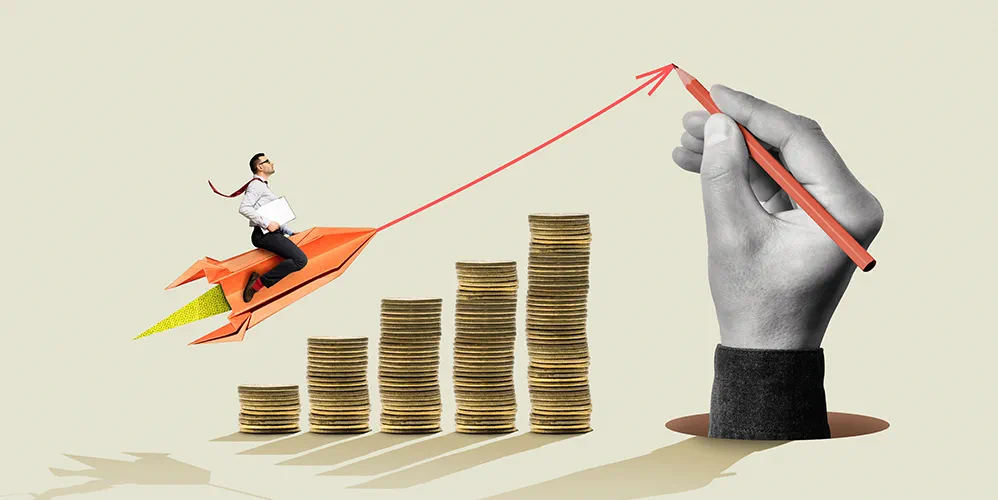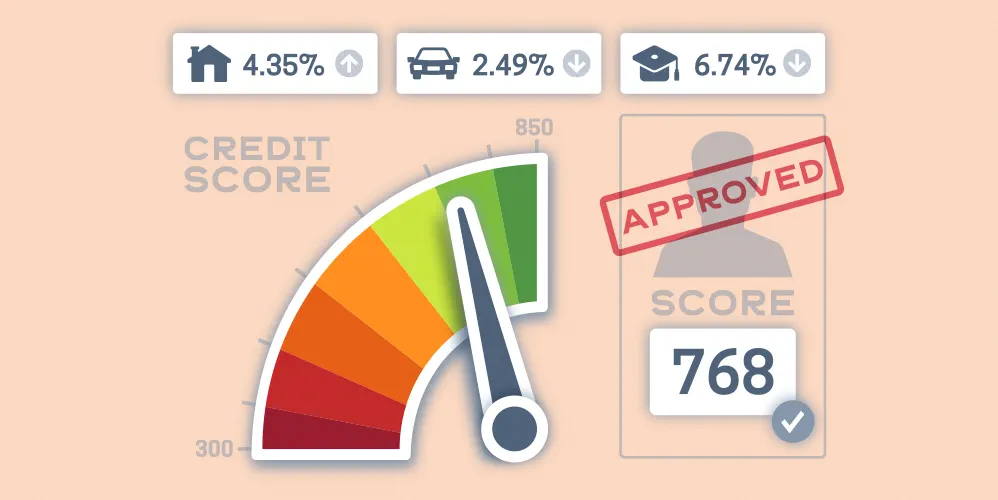
What are the differences between debit and credit cards?
15 May 2019

When you open a bank account, you are provided with a cheque book, a passbook and an ATM-cum-debit card, also known simply as a debit card. After you’ve held your account with the bank for some time, the bank may even offer you a credit card. However, many people are often confused about the difference between debit and credit card and often assume them to be the same. So, we’ve listed the differences to help you understand. Let’s start with understanding the meaning of each card .
What is a debit card?
A debit card is a card that is linked with your savings or current bank account. When you open your bank account, the bank issues a card that you can use at ATMs and PoS terminals to withdraw money or pay for your expenses, respectively. The sums are automatically and instantly debited or deducted from your debit card. Banks provide free debit cards and charge a small annual maintenance fee.
What is a credit card ?
A credit card is another type of bank card through which you can borrow money for a bank or financial institution. The issuer provides you with a line of credit, also known as a credit limit. This limit is determined based on your income and can be increased from time to time. The issuer bills you for your credit card expenses, and you need to pay them off by a stipulated date. If you fail to repay the sums borrower on credit, the issuer levies an interest rate on the money borrowed.
Also Read: A Complete Guide to Debit Card
Credit card vs debit card
Having explained the meanings of credit and debit cards, let’s find out what is the difference between credit card and debit card. They are as under:
• Bill vs account statement
People who have a credit card are sent a bill for the expenses incurred on the card each month. The issuer sends a bill explaining the minimum and total sums due. In the case of debit cards, the account holder can directly access the savings account to see the expenses incurred.
• Linking the card
The debit card is linked to your savings account, whereas the credit card is linked to the financial organisation or issuing bank offering the credit facility.
• Credit vs spending limit
Typically, credit card companies provide a credit limit, and you cannot borrow sums exceeding the credit limit. In the case of debit cards, banks issue daily cash withdrawal as well as PoS spending limits.
• Interest charged
The credit card issuer levies an interest rate if one is unable to repay the amounts borrowed on time. However, in the case of debit cards, money is not borrowed on credit, so no interest is charged.
Also Read: Complete Guide on Credit Cards
Apart from the points mentioned above, a significant aspect of difference between debit and credit card is that debit cards are provided free of charge by the bank. In contrast, credit cards may be availed through an application or by invitation only.
Popular Articles
Related Articles










Guide to Getting Agriculture Loan: Application, Eligibility & Required Documents
-
Disclaimer
The contents of this article/infographic/picture/video are meant solely for information purposes and do not necessarily reflect the views of Bank of Baroda. The contents are generic in nature and for informational purposes only. It is not a substitute for specific advice in your own circumstances. Bank of Baroda and/ or its Affiliates and its subsidiaries make no representation as to the accuracy; completeness or reliability of any information contained herein or otherwise provided and hereby disclaim any liability with regard to the same. The information is subject to updation, completion, revision, verification and amendment and the same may change materially. The information is not intended for distribution or use by any person in any jurisdiction where such distribution or use would be contrary to law or regulation or would subject Bank of Baroda or its affiliates to any licensing or registration requirements. Bank of Baroda shall not be responsible for any direct/indirect loss or liability incurred by the reader for taking any financial decisions based on the contents and information mentioned. Please consult your financial advisor before making any financial decision.
How to Calculate Car Loan EMI: A Step-by-Step Guide
Every individual’s journey to buy a car is unique. It begins with where the individual is in his/her career, and the choice of vehicle they want, which is mainly based on why they want the car. During the process, they also focus on how they can get a car loan that suits their requirement.
When you, as an individual are considering a car loan, you are likely to do your due homework in checking for affordability and the loan tenure among other factors. While it is essential to go for a car loan from a lender who has banking expertise in the sector of car or auto loans, so you get the best rate and comfortable repayment options, you can also use the EMI calculator like the Bank of Baroda’s Car Loan EMI calculator that will help you make a well-informed choice in picking your car loan.
In using a car loan EMI calculator, you need to key in three basic variables- the loan amount you are likely to need, the tenure or the repayment period that suits your finances and the rate of interest. Now, the rate of interest is what you get from the bank, while the other two are the ones you can play around with on the calculator. Here is why using a car loan EMI calculator works.
If EMI is more:
You can pick a longer loan term or
You can make the loan amount smaller
If you find the EMI is coming out to be lower, then you can plan for a larger loan value or a shorter loan term.
You can also use the PMT formula on Microsoft Excel to calculate the EMI (Equated Monthly Instalments), where PMT is your EMI, Rate is the rate of interest, Nper or number of periods is the total number of payments for the loan and Pv is the loan value or the principal. The formula is PMT (Rate, Nper, Pv).
You can keep trying the formula for various combinations and then choose the one with the lowest EMI, though this is a roundabout approach prone to human error.
Bank of Baroda offers car loans and has a wide range of benefits, irrespective of your loan amount or type of vehicle.
With a BoB car loans, you can ride home your dream car in a short period of time. Our loans are designed for those who may be unable to purchase a private vehicle due to paucity of funds.
You can benefit from quick processing, minimal documentation and speedy fund disbursal. Additionally, our loan borrowers are not required to pay foreclosure charges or pre-payment penalty, nor do they need to pay advance EMIs.
With higher limits on the car loan amount, you can avail loans for new cars based on your eligibility. So, if you have always had your eye on a luxury car, our loan can take you one step closer to your dream.
Also, say goodbye to down payment worries, as you can get up to 90% financing on the car’s on-road price with Bank of Baroda’s auto loan.
Bank of Baroda offer attractive interest rates on loans to all our customers based on their credit scores. Additionally, existing home loan borrowers with a good credit history enjoy a concession on their car loan interest rate.
Home Loans for Women (Benefits)
All of us dream of become homeowners. It is a way of ensuring lifelong financial security; the kind that does not come from living in a rented home. But buying a home is a complicated process. Whether it is years of savings to be given as down payment, or finding the right locality to invest in; the process of buying a home is elaborate. And since property investments take a huge chunk of savings, most of us rely on home loans, which often last for over 2 decades. However, women borrowers have it a bit easy thanks to government home loan schemes for women. Let’s find out how women can benefit from home loans designed for them.
Reduced Rates of Interest
If you’ve ever purchased anything on a loan, you will know that even a point’s difference in interest rates can amount to a lot of savings. If your interest rate on the loan is high, you always end up paying more. In such a case, even a slight reduction in interest rates can make a lot of difference. This also affects your monthly EMI which is further reduced. Under the government scheme, home loan interest rates for women are reduced by 0.05% by most banks in the country. While this may seem like a small percentile, consider the following example:
Let’s say you take out a home loan of ₹50,00,000 form a bank for a tenure of 20 years. The bank offers an interest rate of 8.65% to its male borrowers and 8.60% to its female borrowers. In this case, the interest outflow for men is ₹55,28,083, but due to the reduced 0.05%, the interest outflow for women is ₹54,89,953. As a result, the savings in interest outflow for women borrowers’ accounts for ₹38,130.
Reduced Stamp Duty Charges
Stamp duty forms a part of the property cost, and the reduced interest rate can make a huge difference in reducing stamp duty charges too. Most lenders provide 80%-90% finance on home loans, with a set percentage of money paid in stamp duty char.ges. But as per the home loan subsidy for women, a concession of 1%-2% is typically applicable on stamp duty charges. If a woman purchases a property worth ₹50,00,000, she can save ₹50,000 to ₹1,00,000 on stamp duty charges alone.
Tax Benefits
Both, male and female borrowers are eligible for tax deduction on home loan repayments. The maximum tax deduction permitted in principal and interest repayments is ₹1,50,000 and ₹2,00,000 respectively. If a woman borrower applies for a home loan along with her husband, she can receive tax deduction in equal measures.
Longer Repayment Tenures
While male borrowers are typically provided with loan repayment tenures of 20 years and a maximum age of 65 years to repay the loan, whichever is early; home loans for women are offered for tenures of up to 30 years or up to 70 years of age of the borrower, whichever is early.
Keywords Used
Home loan for women, home loan subsidy for women, home loan interest rates for women, government home loan schemes for women.

